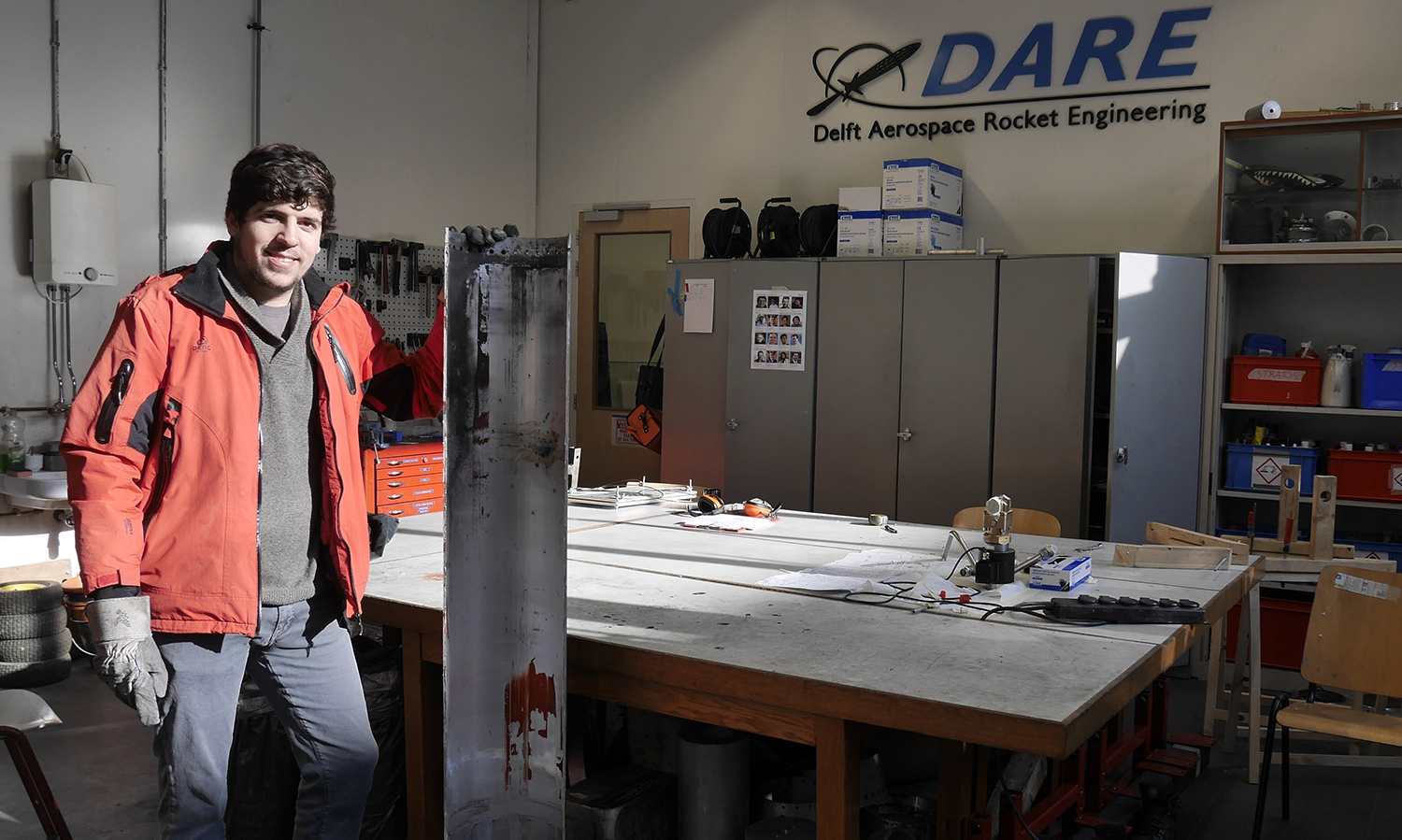“It’s a big bunker,” says Filipe Barreiro, chief propulsion engineer with project Stratos. “But there is no heating, and the days are long.” A larger rocket means a longer time to fill the oxidiser tanks and a longer time to heat them to build up pressure. The current rocket engine, Nimbus, is about twice as big as its predecessor, Stratos II+, that was launched in 2015. After a burn time of twenty seconds, the Stratos II+ broke the height record, reaching 21.5 kilometres. This record was later broken by students from Stuttgart University. The Delft Aerospace Rocket Engineering (DARE) team is confident that its current DHX-400 Nimbus engine will fire the Stratos III to a new record. Simulations predict a height of between 60 and 80 kilometres.


